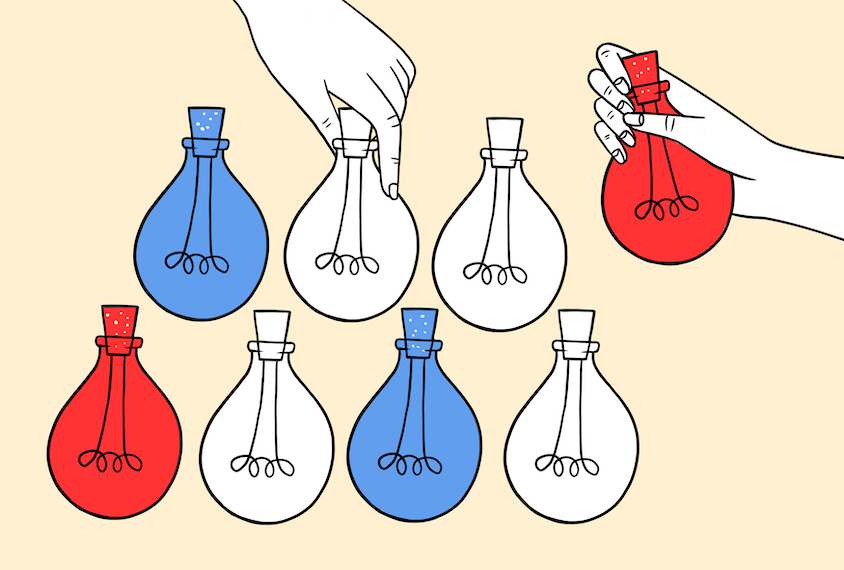Listen to this story:
The January edition of this newsletter highlighted three studies that reported null results on autism therapies. But proving a negative is tricky, and null results can sometimes reflect study design rather than a true lack of effect. The investigators on one of the three studies elaborated on that point in an article for Spectrum last month that provides an important guide to evaluating studies on autism interventions.
I appreciate readers’ active engagement with this newsletter, which this month highlights autism interventions once again. As always, send your thoughts, feedback and suggestions to [email protected].
Infant interventions:
Though much autism research aims to identify and provide supports for the condition early in life, it’s still unclear which interventions work best and for whom. A new review emphasizes how far the field is from that goal: Data from 12 randomized clinical trials involving 715 infants and toddlers with autism or a high likelihood for it suggest that interventions before age 2 do not change children’s autism traits, cognition or language, as measured by clinicians. The researchers have “moderate” certainty in their conclusions, according to a tool they used to evaluate the quality of the evidence.
Children also showed some changes in electroencephalography and eye-tracking measures after intervention, but that evidence was of poor quality. The results suggest that “the future gold-standard very early intervention for infants and toddlers at increased likelihood of or diagnosed with autism is yet to be developed,” the researchers wrote in the study, published in Autism Research on 10 April.
Brain fluid:
Biomarkers that distinguish autistic from non-autistic children could improve early-intervention research. One proposed marker — an excess of cerebrospinal fluid (CSF) in the space surrounding the cerebral cortex — has been seen in autistic infants and children up to age 4 but not in older autistic people or in infants with a family history of schizophrenia.
After age 4, though, autistic people’s CSF volume does not differ from that of people with attention-deficit/hyperactivity disorder (ADHD), anxiety or a learning disorder, or from that of people without a neurodevelopmental condition, according a new study in 446 people aged 5 to 21 years. CSF’s usefulness as an autism biomarker is thus likely limited to children under age 5, the researchers write.
It’s possible that the mechanism by which CSF exits the brain is disrupted in autistic infants, says David Amaral, distinguished professor of psychiatry and behavioral sciences at the University of California, Davis MIND Institute, who has studied CSF in babies and children. That mechanism does not typically develop until 18 months of age. Still, some autistic children retain excess CSF at age 6 and beyond, Amaral says. “This may be a distinct subset of autistic children.”
Diagnostic flip:
Mounting evidence suggests that the neural biology underlying neurodevelopmental conditions doesn’t align well with diagnostic categories and instead overlaps across conditions. For example, a 2020 study of 407 people with or without autism, ADHD or obsessive-compulsive disorder (OCD) found that functional connectivity patterns correlated better with specific traits, such as daily living skills, than with a person’s diagnosis. In a new study, the researchers replicated their findings in the same cohort plus additional children from another dataset, including a total of 1,102 children and adolescents with or without autism, ADHD or OCD. The connectivity patterns that best sorted the cohorts into groups reflected traits such as intelligence and hyperactivity, not diagnosis, the researchers found.
The findings were published in JAMA Network Open in March.
Et al.:
- Autistic people spend less time looking at faces than non-autistic people do when watching a video — but the difference disappears when participants believe they are watching a live feed. The findings “suggest that social attention is not as different in autism as first thought,” the researchers write. Autism
- A registered report in the wild! The Theory of Mind Task Battery works just as well as the Strange Stories Test — the standard instrument for measuring a person’s ability to identify others’ emotional states — in autistic children. British Journal of Clinical Psychology
- More than one-third of autistic and possibly autistic people have considered suicide, and nearly a quarter have made an attempt, according to a meta-analysis in 48,186 people that once again confirms high rates of suicidality in people with autism. Molecular Autism
- Studies from 2019 and 2021 linked intrinsic neural timescales — the amount of time a brain area stores information — with autism and schizophrenia trait severity, but a new attempt to replicate those results found no such association. Schizophrenia
- Using asthma and allergy medications called leukotriene-receptor antagonists during pregnancy does not increase the likelihood of autism, ADHD or Tourette syndrome in children. JAMA Network Open
- Resting-state brain activity is altered in autistic children, according to a replication of a 2019 study. Journal of Autism and Developmental Disorders





